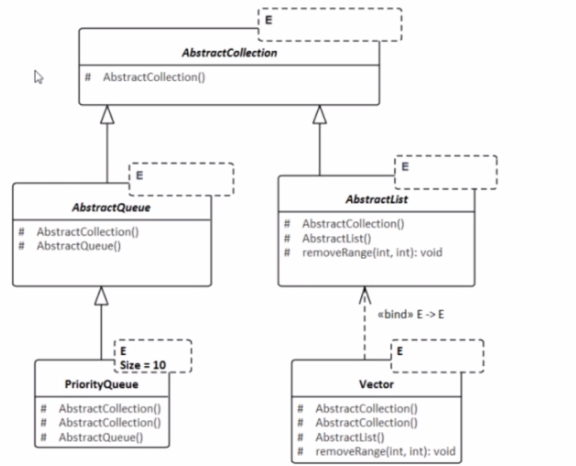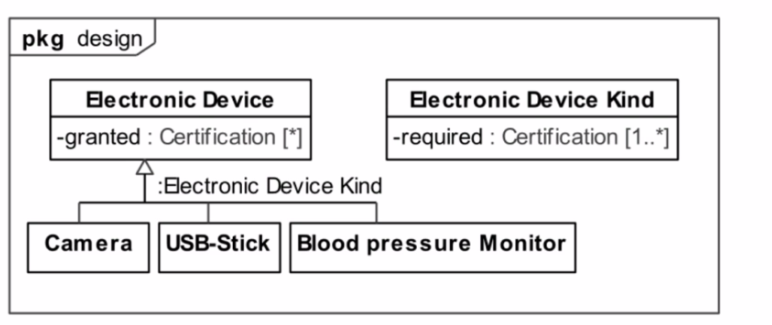At ValidExamDumps, we consistently monitor updates to the OMG-OCUP2-ADV300 exam questions by OMG. Whenever our team identifies changes in the exam questions,exam objectives, exam focus areas or in exam requirements, We immediately update our exam questions for both PDF and online practice exams. This commitment ensures our customers always have access to the most current and accurate questions. By preparing with these actual questions, our customers can successfully pass the OMG Certified UML Professional 2 (OCUP 2) - Advanced Level exam on their first attempt without needing additional materials or study guides.
Other certification materials providers often include outdated or removed questions by OMG in their OMG-OCUP2-ADV300 exam. These outdated questions lead to customers failing their OMG Certified UML Professional 2 (OCUP 2) - Advanced Level exam. In contrast, we ensure our questions bank includes only precise and up-to-date questions, guaranteeing their presence in your actual exam. Our main priority is your success in the OMG-OCUP2-ADV300 exam, not profiting from selling obsolete exam questions in PDF or Online Practice Test.
Choose the correct answer:
Consider the following diagram:

action 1 executes the classifier Behavior of the input object What kind of Action is action 1?
In the given UML activity diagram, 'action 1' is an action that executes the classifier behavior (intrinsic behavior) of an instance. The correct UML action that represents this behavior is:
A . CallBehaviorAction is used to call a behavior directly, but not necessarily the classifier behavior of the input object.
B . CallOperationAction is used to call an operation, which is not the intrinsic behavior of an instance.
C . StartObjectBehaviorAction is the correct answer. This action starts the execution of the classifier behavior of an object.
D . CallClassifierBehaviorAction is not a standard UML action.
UML Specification: Actions section, which explains the various types of actions including the StartObjectBehaviorAction.
Further details about actions that initiate behaviors of objects can be found in the UML 2.5 Documentation, specifically in the chapters discussing Actions in Activity diagrams.
Choose the correct answer:
A framework developer has been given a requirement to create an extensible utility for solution developers to use to create collections. The framework developer has submitted the following diagram fragment for review:

Which review comment is valid and applicable?
The other options can be evaluated as follows:
Option A:The upper limit for the size ofPhontyQueueis a design decision that should be based on the requirements and use cases of the application. It is not inherently incorrect in UML to have a specific upper limit.
Option C:The Generalization relationship is correctly used betweenPriorityQueueandAbstractQueueas it represents inheritance in UML.
Option D:While it is true that template parameters are typically defined at the top of the hierarchy, the statement is too absolute. In UML, template parameters can be added to specialized classes, but it depends on the specific design and requirements. Therefore, without additional context, this statement cannot be deemed universally valid.
In conclusion, the most applicable and valid review comment is option B, which correctly identifies the misuse of the bind relationship in the context of the class diagram provided.
Choose the correct answer:
In addition to stereotypes, which UML elements can a profile define?
A UML profile can define several different elements to extend the UML for a specific domain, platform, or purpose. Besides stereotypes, a profile can define DataTypes and Enumerations, which can be used within Stereotypes to type the tagged values. A profile can also define Classes, which can be used as base classes for stereotypes. However, a profile does not typically define instances of elements, such as Objects, nor does it define composite structures, such as Components. The intent of a profile is to adapt existing metamodel elements through the use of stereotypes, tag definitions, and constraints rather than to create instances or define system architectures. This definition and use of a profile are aligned with the guidelines in the UML 2.x Superstructure Specification, which outlines what elements a profile can define within the UML framework.
Choose the correct answer: Which construct specifies all possible valid traces?
In UML, combined fragments are used to model complex sequence flows by grouping a set of interactions together. Each type of combined fragment has a different semantic use.
The 'assert' combined fragment specifies that the sequence of events inside the fragment must occur exactly as shown, with no deviations or alternatives. This implies that all possible valid traces in the sequence are exactly those specified within the 'assert' fragment; there are no optional or alternative flows.
Reference include:
UML 2.5 Specification (formal/2017-12-05), specifically the section on Combined Fragments and their semantics.
UML Sequence Diagrams: Overview of Graphical Notation, which discusses the purpose of different combined fragments.
Choose the correct answer:
Consider the following diagram:

Which statement is correct about the diagram?
The diagram depicts Electronic Device Kind as a class that requires a set of Certifications (required : Certification[1..*]). This implies that any subclass of Electronic Device Kind must provide a set of required Certifications because the multiplicity [1..*] indicates that at least one Certification is mandatory for each instance of Electronic Device Kind or its subclasses. Therefore, when a subclass is created, it inherits the requirement to specify what Certifications are needed. This is a standard UML generalization, where the subclass inherits the attributes and constraints of its superclass. This interpretation is consistent with the rules defined in the UML 2.x Superstructure Specification, which includes the semantics of class generalization and attribute inheritance.